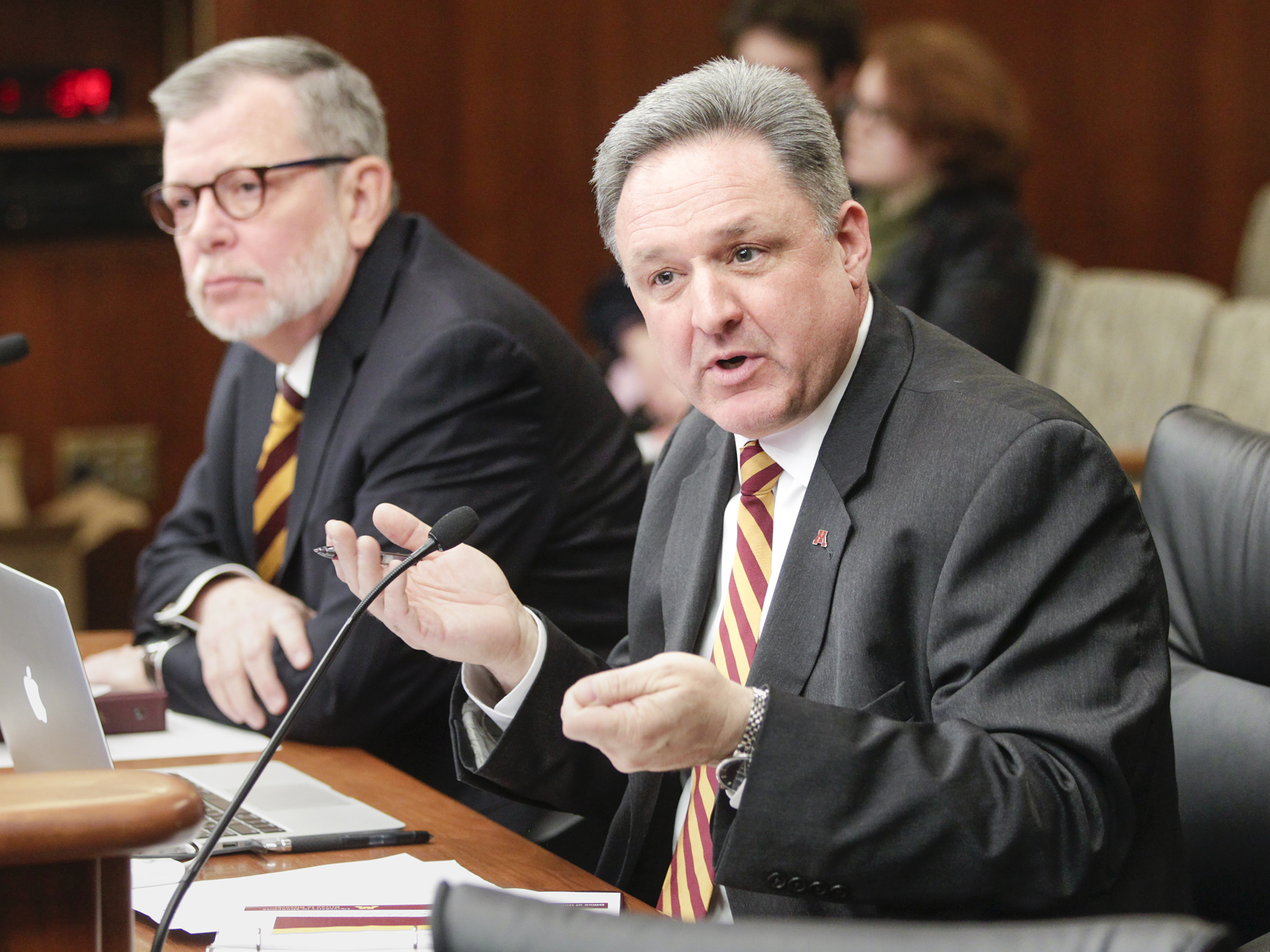University of Minnesota makes $87 million budget request for biennium

Nothing special. That’s what the University of Minnesota is asking for in the budget request it presented to the House Higher Education Finance and Policy Division Tuesday.
There are no one-time projects like the MnDRIVE research initiative or building a new Bell Museum of Natural History, which were part of the university’s last biennial legislative request in 2017. The current funding request is centered upon compensation for the school’s faculty and staff, and keeping up with the core needs of students.
The $87 million request is $60 million smaller than what the university asked from the state two years ago. It consists of $30 million in Fiscal Year 2020 and $57 million in Fiscal Year 2021.
“We must continue to invest in our core operations to maintain high-quality faculty and staff, address the most critical facility and technology needs, and support statewide initiatives,” University of Minnesota President Eric Kaler said.
Sixty percent of the monies would go to faculty and staff compensation.
“The competition around the country for the best faculty and staff is fierce,” said Brian Burnett, senior vice president for finance and operations. “In the College of Science and Engineering, they’ve recently lost four faculty members in the departments of electrical and computer engineering, and computer science to other institutions who offered more competitive salaries. In our College of Veterinary Medicine, four recent departures were … for pay increases that were significant.”
Burnett said the university is also losing staff in technology and financial services for similar reasons.
He also spoke of increased demand for support services for students in the areas of disability resources, guidance counselors and mental health services. “The growth in students seeking counseling has been increasing annually for us at a rate of 25 to 30 percent.”
Simran Mishra, president of the Minnesota Student Association, said students are facing increasing financial pressures.
“For every dollar that the state invests in the University of Minnesota,” Mishra said, “$13.82 is returned to the state’s economy. Nevertheless, the state’s share of the cost of a university education has been decreasing. As this coverage is reduced, tuition has made up the difference. In 1990, students paid 25 percent of the cost of their education. Today, not even 30 years later, students pay 50 percent.”
Related Articles
Search Session Daily
Advanced Search OptionsPriority Dailies
Ways and Means Committee OKs proposed $512 million supplemental budget on party-line vote
By Mike Cook Meeting more needs or fiscal irresponsibility is one way to sum up the differences among the two parties on a supplemental spending package a year after a $72 billion state budg...
Meeting more needs or fiscal irresponsibility is one way to sum up the differences among the two parties on a supplemental spending package a year after a $72 billion state budg...
Minnesota’s projected budget surplus balloons to $3.7 billion, but fiscal pressure still looms
By Rob Hubbard Just as Minnesota has experienced a warmer winter than usual, so has the state’s budget outlook warmed over the past few months.
On Thursday, Minnesota Management and Budget...
Just as Minnesota has experienced a warmer winter than usual, so has the state’s budget outlook warmed over the past few months.
On Thursday, Minnesota Management and Budget...